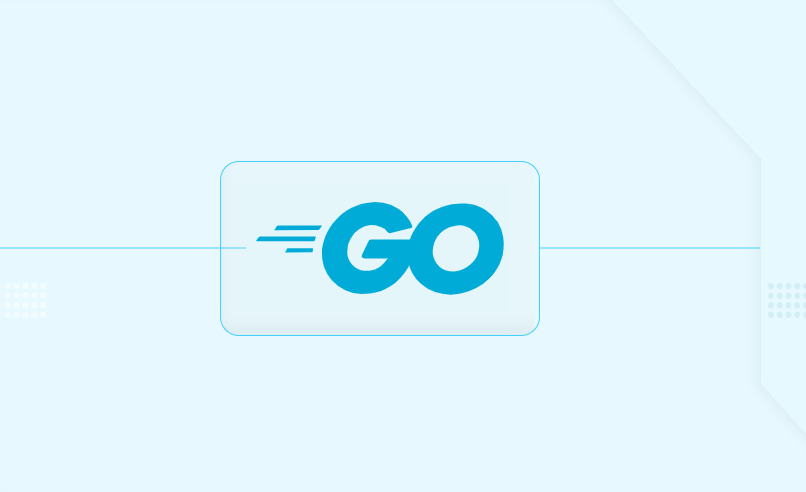Go (sometimes called Golang) is a programming language that Google created. It's open-source, which means anyone can use it for free. The folks at Google built Go because they wanted something that was simple to learn but powerful enough to handle big projects.
Think of Go as the best of both worlds - it runs fast like C++, but it's much easier to write and understand, more like Python. That's why so many companies are switching to Go for their backend systems and web services.
Key features of Go
What makes Go special? Well, there are several things that set it apart from other programming languages.
It's really fast. When you compile your Go code, it turns into a single file that runs lightning quick. You don't need to install a bunch of extra stuff on the computer where your program will run.
Go handles multiple tasks at once beautifully. This is called concurrency, and Go makes it so much easier than other languages. You can have thousands of things happening simultaneously without your program breaking a sweat.
Go takes care of memory management for you. You don't have to worry about cleaning up after yourself - Go's garbage collector does that automatically. This prevents a lot of common bugs that crash programs.
Setting up the Go environment
Getting Go running on your computer is pretty straightforward. Here's what you need to do:
Download Go: Head over to the official Go website and grab the version that matches your computer's operating system.
Installation:
Windows users: Just run the installer file and click through the setup wizard
Mac users: Open the downloaded package and follow the steps
Linux users: Extract the files and add the
go/binfolder to your PATH
Setting environment variables: You'll need to set up GOPATH, which tells Go where to keep your projects. Don't worry if this sounds technical - the installer usually handles this for you.
Verifying installation: Open your terminal (or Command Prompt on Windows) and type
go version. If you see version information, you're all set!IDE setup: While you can write Go code in any text editor, tools like Visual Studio Code or GoLand make life much easier with features like auto-completion and error highlighting.
Basic syntax and structure
Every Go program starts with some basic pieces. Let's look at the classic "Hello, World!" example:
package main
import "fmt"
func main() {
fmt.Println("Hello, World!")
}
This might look scary at first, but it's actually quite simple. The package main line tells Go this is a standalone program. The import "fmt" line brings in Go's formatting tools so we can print text. The func main() part is where your program actually starts running.
Variables in Go are straightforward too. You can create them like this:
var name string = "John"
age := 25
Go has the usual control structures you'd expect - if statements for decisions, for loops for repetition, and switch statements for multiple choices. They work pretty much like other languages, just with slightly different syntax.
Functions are also simple. You define them with func, give them a name, and specify what they do:
func greetUser(name string) string {
return "Hello, " + name
}
Fundamental concepts in Go
Let's look at what makes Go different from other programming languages. These are the main ideas you should know.
Simplicity
Go's creators believe that simple is better than complex. They deliberately left out features that might confuse beginners or make code harder to read. This means when you look at Go code six months later, you'll still understand what it does.
Strong typing
Go checks your variable types when you compile your program, not when it's running. This catches a lot of mistakes early, before your users ever see them. But don't worry - Go is smart about converting between similar types when it makes sense.
Concurrency
This is Go's superpower. Goroutines let you run multiple functions at the same time without the complexity you'd face in other languages. Channels let these concurrent functions talk to each other safely. It's like having a well-organized team where everyone knows their job and communicates clearly.
Garbage collection
Go automatically cleans up memory you're no longer using. This prevents memory leaks and crashes that plague other languages. You can focus on solving problems instead of managing memory.
Package system
Go organizes code into packages, which are like toolboxes full of related functions. The standard library comes with packages for almost everything - web servers, file handling, math operations, and much more. When you need something not in the standard library, go get can download it for you.
Error handling
Go handles errors differently than many languages. Instead of throwing exceptions, functions return error values that you check explicitly. This might seem verbose at first, but it makes your programs much more reliable because you can't accidentally ignore errors.
Static linking
When Go compiles your program, it packages everything into a single executable file. This makes deployment super easy - just copy one file to your server and run it. No dependency hell to worry about.
Strong standard library
Go comes with batteries included. Need to build a web server? There's a package for that. Want to work with JSON? Built-in. Need to handle dates and times? Covered. This means you can build substantial applications using just what comes with Go.
Tooling
Go includes excellent tools right out of the box. go fmt formats your code consistently. go vet finds potential bugs. go test runs your tests. Everything works together smoothly, so you spend more time coding and less time configuring tools.
Practical examples and code snippets
Let's look at some real Go code that does useful things.
Creating a simple HTTP server:
package main
import (
"fmt"
"net/http"
)
func main() {
http.HandleFunc("/", func(w http.ResponseWriter, r *http.Request) {
fmt.Fprintf(w, "Hello, World!")
})
fmt.Println("Server started on :8080")
http.ListenAndServe(":8080", nil)
}
This creates a web server that listens on port 8080. When someone visits your server in a browser, they'll see "Hello, World!". The net/http package handles all the complicated web server stuff for you.
Handling JSON data:
package main
import (
"encoding/json"
"fmt"
)
type Person struct {
Name string `json:"name"`
Age int `json:"age"`
Address string `json:"address"`
}
func main() {
// Creating a JSON object
person := Person{Name: "Alice", Age: 30, Address: "123 Main St"}
// Converting to JSON
jsonData, err := json.Marshal(person)
if err != nil {
fmt.Println("Error:", err)
return
}
fmt.Println(string(jsonData))
// Converting back from JSON
var decodedPerson Person
if err := json.Unmarshal(jsonData, &decodedPerson); err != nil {
fmt.Println("Error:", err)
return
}
fmt.Println("Decoded:", decodedPerson)
}
This example shows how to work with JSON data, which is super common in web applications. We define a Person struct, convert it to JSON, and then parse JSON back into a Go struct.
Conclusion
Go is a language that gets out of your way and lets you focus on solving problems. It's fast, reliable, and surprisingly easy to learn, with clean syntax and excellent tooling that makes development a breeze. Whether you're building web services, command-line tools, or distributed systems, Go has you covered, and its growing popularity in cloud computing means learning it is a smart career move. The best part is you can be productive in Go within days, not months, so why not give it a try and see what you can build?



